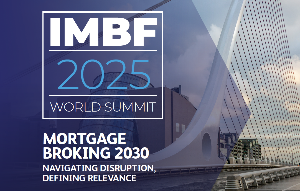It says there are people and organisations that would prefer rental properties were in the hands of social landlords, such as Kainga Ora or Community Housing Providers (CHPs).
As a step to dissuade private landlords from buying existing properties for rentals, the Government has instigated tax changes, which increases the demand for social housing. That list has grown from 5,000 in 2017 to 27,000. The Government is also encouraging private rental property owners to provide their properties to Kainga Ora and CHPs for them to run as rentals.
The federation says the Government did this by removing mortgage interest as a tax deduction to private rental property owners. If those owners agree to hand over their rentals to social landlords they can keep the tax deduction.
However, social landlords offer tenants cheaper rent than their private counterparts through Government funding under the Income Related Rents (IRR) programme. This subsidy allows social housing providers to charge tenants just 25% of their income for rent, with the Government topping this up to market rent level, paid directly to the social housing provider.
This keeps social housing providers’ rents artificially cheap, says the federation. It says who a tenant’s landlord is should not determine how much Government assistance is given.
The explain what happens, the federation has set out the rent from three different landlords for three families in similar financial situations. In the example, the families are the parents and two children, with one parent working 40 hours a week on minimum wage, earning $848.
The three landlords are all providing similar homes valued at $895,000, with a market rent of $550 a week. The following shows how costs are distributed under the various landlord groups over a year.
|
KaingaOra (Housing NZ) |
Community Housing (Property leased from a private owner) |
Private landlord (Can’t claim mortgage interest) |
|
| Accommodation supplement to tenant | $ 11,440 | ||
| Income-related rent subsidy | $ 17,576 | $ 17,576 | |
| Cost to tenant | $ 11,024 | $ 11,024 | $ 17,160 |
| Total rent | $ 28,600 | $ 28,600 | $ 28,600 |
| Excess costs over income for owner | $ 10,972 | $ 22,100 | |
| Excess costs over income for Kainga Ora | $ 9,724 | ||
| Total cost to the Government | $ 27,300 | $ 17,576 | $ 11,440 |
| Cost to CHP | Unknown |
Under Kainga Ora, the Government not only pays the higher IRR subsidy but also supports Kainga Ora for the losses it makes. This makes state rental property in this example, the most expensive for taxpayers at $27,000 a year. Additionally,
Kainga Ora (and so the state) takes on the risk of interest rates and other cost increases.
Charging a tenant less doesn’t make the rental cheaper to provide, but it does mean the cost has to be met somewhere else.
Returning mortgage interest as a tax deductible expense for all rental property would be equitable and encourage more rental properties to be provided for tenants. The federation proposal to add long-term leases to the RTA would also provide security of tenure for all tenants who want it.
Those who want to push private rental providers out of the market need to understand private property owners are in the best position to house the country’s tenants. “Not just with good warm and dry properties, but also through being more cost-effective,” says the federation.



